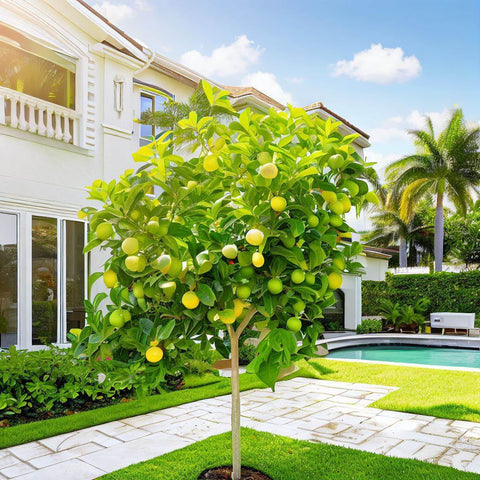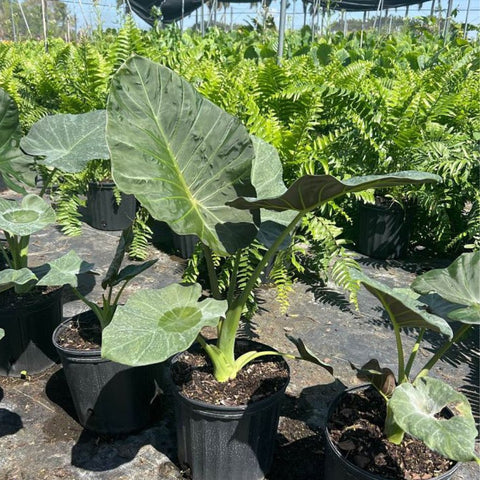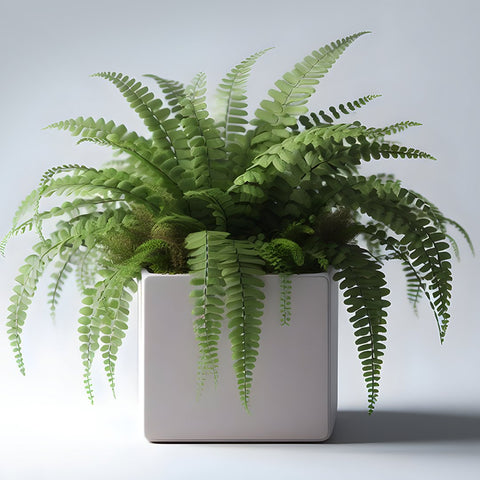Introduction
The first signs of spring bring hope and excitement to gardeners everywhere as flowers blossom and vegetables sprout. However, this idyllic vision can quickly turn into a gardener's nightmare when the threat of late frosts lingers. Late frosts can wreak havoc on your garden, specifically targeting young, tender plants that have just started to grow. Imagine your precious saplings struggling under a thin layer of ice, their delicate leaves shivering in the unexpected cold. The stakes are high, which is why understanding and managing the risks of late frosts is crucial for gardeners. This guide from Plantology will arm you with effective strategies to shield your garden against these unseasonal threats, helping to secure a fruitful growing season ahead.

Understanding Late Frosts
What are Late Frosts?
Late frosts occur when temperatures drop below freezing levels after the onset of spring. These unexpected frosts can appear in many climates, often catching gardeners unprepared as they cultivate their spring gardens. The unique challenge of late frosts is their unpredictability. They typically happen after the planting period has begun, threatening young and vulnerable plants that are not yet acclimated to such extreme conditions.
The Impact of Late Frosts on Spring Gardens
Late frosts can be devastating, leading to cellular damage in plants where water inside plant tissues freezes and forms ice crystals. This can cause the cells to rupture, leading to wilting, browning of leaves, and even plant death. Notably, fruiting plants and certain trees may lose flowers or fail to fruit if they are caught in a frost during critical growth stages. Additionally, the cumulative damage from repeated frosts can weaken plants, making them more susceptible to diseases and pests.
Recognizing Frost-Prone Plants
Identifying Vulnerable Plants
While all plants can potentially be affected by late frosts, certain species are more vulnerable than others. Tender, young seedlings, newly planted saplings, and early-blooming flowers are at greater risk. For instance, species such as the Adonidia Palm, with its tropical origins, require extra care as they are unaccustomed to abrupt cold snaps.

Plant Characteristics and Frost Sensitivity
Plants with thin leaves, fleshy stems, and high water content are typically more sensitive to frost. Contrast this with more frost-hardy plants, which often have thicker leaves, waxy coatings, or other protective adaptations. When planning your garden, understanding these inherent plant properties can guide your choices and strategies in frost protection.
Preparing Your Garden for Late Frosts
Site Selection and Planning
Before planting, consider your garden's site selection. Gardens located on northern slopes or in low-lying areas are more prone to colder temperatures. Aim for higher ground with southern exposure if possible, as these areas tend to warm up faster in the morning and retain warmth longer.
Soil Management Techniques
Healthy soil acts as insulation and can better protect young plants from a sudden chill. Organic mulches, such as straw or wood chips, can provide an additional layer of warmth. Moreover, darker soils absorb more heat during the day, aiding warmth retention overnight.
Techniques to Protect Plants from Frost
Using Covers and Shields
Row Covers and Cloches
Fabric row covers, also known as floating row covers, can be draped over plants to trap heat and protect against frost. Cloches, which are bell-shaped covers made of glass or plastic, provide similar benefits. Both need to be removed during the day to prevent overheating.

Mulching for Warmth
A thick layer of mulch around the base of plants can provide insulation. Use organic options such as straw, leaves, or even newspaper to cover the soil and protect roots.
Watering Strategies
Watering your plants well before a frost can protect against frost damage. Wet soil traps more heat than dry soil, and as water freezes, it releases heat, which can help maintain plant temperature. However, ensure the ground is not waterlogged, as excess water can cause other issues.
Using Heat Sources
For small gardens, setting up light bulbs or heat lamps overnight can maintain warmth. Alternatively, laying black plastic or landscape fabric can collect solar heat during the day and release it at night.
Cold-Hardy Plant Recommendations
Tough Plants for Challenging Frosts
Consider planting species known for their cold tolerance. Options like Agapanthus Lily of the Nile or various Agave varieties such as Caribbean Agave, which thrive in diverse conditions, are excellent choices for areas with late frosts.
Balancing Aesthetics and Hardiness
Though hardiness is a priority, many frost-tolerant plants also offer aesthetic value. For instance, the Aglaonema Silver Bay boasts impressive foliage while enduring cooler climates.

Maintaining Plant Health After Frosts
Practical Steps Post-Frost
After frost exposure, inspect plants carefully. Trim away damaged leaves and stems to prevent rot and fungus development. Encourage recovery with a gentle fertilizing regimen to promote new growth.
Long-Term Resilience Building
Over time, consider gradually acclimating plants to cooler temperatures to build resilience. This approach can condition your blooms and vegetables to withstand unexpected temperature dips.
Your Plantology Frost Protection Essentials
Explore Our Cold-Resistant Selections
At Plantology, we understand your challenges and are here to support you in cultivating a flourishing garden. We offer a wide selection of plants with varying levels of frost resistance. Explore our Alexander Palm for a resilient yet exotic choice, or browse our full collection to find the perfect addition to your garden.
Join Our Gardening Community
Connect with fellow gardening enthusiasts and experts via Plantology’s online platforms. Engage with our blog and community forums, where you can share experiences, tips, and transform your gardening challenges into triumphs.
Conclusion
Protecting your spring garden from late frosts is a necessary challenge on the path to a bountiful growing season. By understanding the delicate balance of climate, plant biology, and effective safeguards, you can ensure your young plants not only survive but thrive. As you embark on this journey, remember Plantology is your partner in cultivating a resilient garden. Visit our website for more resources, expert advice, and the best selections for your spring garden.

Technological Advances in Frost Protection
As technology continues to advance, gardeners have more tools at their disposal for frost protection than ever before. Whether you're a hobbyist with a small garden or a commercial farmer managing vast fields, integrating technology can enhance your frost response strategy. Below, we explore some of these cutting-edge solutions.
Digital Forecasting and Monitoring
Smart gardening devices and weather apps can provide real-time updates and alerts on temperature drops and potential frost events. Utilizing a system such as a smart thermostat specifically designed for agricultural use can help you monitor conditions and take pre-emptive action. Many of these devices are equipped with sensors that measure soil and air temperature, humidity, and other variables critical to plant health.
Automated Frost Protection Systems
For larger installations, consider automated systems that deploy frost protection measures based on pre-set thresholds. These systems can automatically activate sprinklers to water the soil, release warm air from heaters, or deploy covers over crops as temperatures fall. While these systems may require an upfront investment, they can save time and minimize damage in frost-prone regions.
Case Studies in Frost Management
Examining real-world examples of successful frost management can provide valuable lessons for any gardener. Below are a few case studies that illustrate different strategies applied in diverse environments.
The Vineyard Strategy: Napa Valley
In Napa Valley, famous for its exquisite wine production, vineyards are particularly susceptible to late frosts during early bud growth. Growers there often use wind machines, which are large fans strategically placed throughout the fields. These machines circulate warmer air from above down to the ground level, preventing the freezing of delicate buds.

Community Gardening: Urban Setting
In urban community gardens, resources are often pooled to combat the effects of frost. In New York City, a local community garden collective invested in shared resources such as insulating blankets and portable greenhouses. By organizing cooperative frost watches, they ensure that enough hands are available to cover sensitive plants and secure structures swiftly at the first sign of frost.
The Role of Biodiversity in Frost Protection
Diversifying plant species in your garden can create a microclimate that mitigates frost damage. Companion planting, where certain plants are grown together for mutual benefit, is one method of fostering biodiversity that can enhance frost resistance.
Creating a Buffer with Perennials
Planting hardy perennials along the perimeter of your garden can act as a buffer against cold winds and create a slightly warmer microenvironment for less hardy species. Perennials such as conifers retain their foliage throughout the year and can provide shelter from chilling breezes.
Companion Planting Techniques
Certain plant combinations can increase warmth retention. For example, tall plants like sunflowers or corn can protect more vulnerable, low-growing plants by acting as windbreaks. These arrangements not only conserve warmth but also maximize sun exposure for shaded understory crops.
Educational Resources and Workshops
For those eager to delve deeper into frost protection, educational resources and workshops can expand your knowledge and refine your skills. Many gardening centers, including Plantology, offer seminars and hands-on workshops covering practical frost protection strategies, soil management, and resilient garden planning.

Online Courses and Tutorials
Consider enrolling in online courses on agricultural science or horticultural care to gain a scientific understanding of plant resilience. Platforms like Coursera and Udemy offer comprehensive courses hosted by botany experts, providing insights into plant physiology and advanced frost mitigation techniques.
Community Gardening Workshops
Local gardening clubs can be an excellent resource for workshops and seminars. These events offer a chance to learn from experienced gardeners in your area and receive tailored advice for your specific climate and location. Participating in these groups can also provide access to shared resources and collective buying power for essential gardening supplies.
Conclusion
In essence, while the risk of late frosts can initially seem daunting, equipping yourself with the right knowledge and tools can transform this threat into manageable parts of your gardening routine. Understanding the interplay between plants, climate, and innovative protective measures allows gardeners to cultivate robust and vibrant gardens even in the face of unpredictable cold snaps.
At Plantology, we're committed to empowering gardeners at every level with resources, support, and inspiration. Our selection of robust, frost-resistant plants, coupled with our dedication to community and education, positions us as your ideal partner in navigating the challenges of late frosts. For more insights, resources, and products to fortify your garden, explore our website and join our vibrant community of gardeners.

Whether you are shielding delicate flowers or nurturing budding vegetables, remember that each frost season is a chance to enhance your gardening expertise and foster resilience. Armed with these strategies, you can face the frosts with confidence, ensuring a flourishing garden that thrives through the seasons.






























Comments (0)
There are no comments for this article. Be the first one to leave a message!